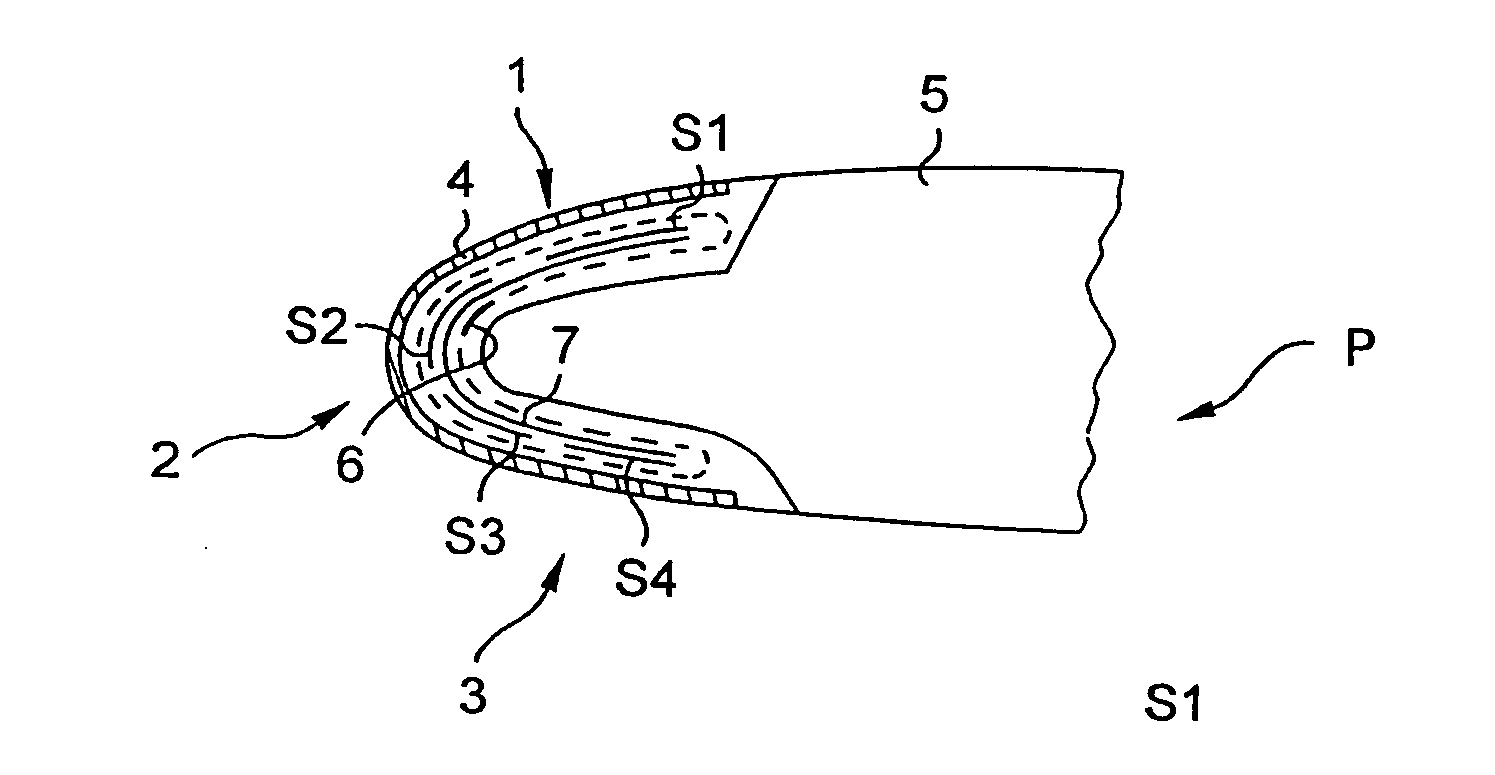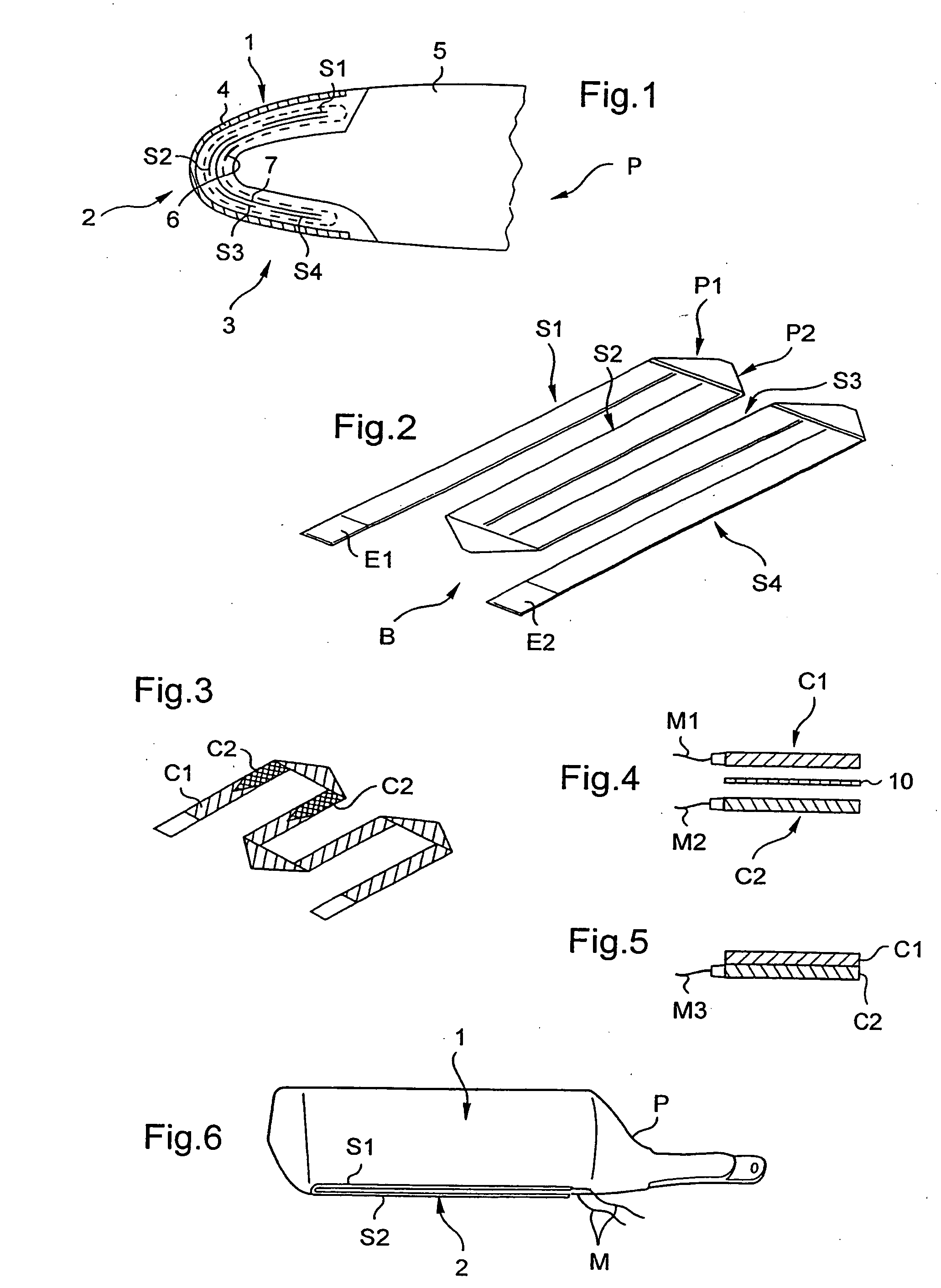Heater mat made of electrically-conductive fibers
a technology of electrically conductive fibers and heaters, which is applied in the direction of heating element materials, heating element shapes, heating elements, etc., can solve the problems of affecting the performance of the aircraft,
- Summary
- Abstract
- Description
- Claims
- Application Information
AI Technical Summary
Benefits of technology
Problems solved by technology
Method used
Image
Examples
first embodiment
[0032]FIG. 2 shows a resistor element in a This resistor element is said to be a “single layer” element insofar as it has only one strip B of electrically-conductive fibers, e.g. carbon fibers.
[0033] This single strip B is made up of four substantially parallel segments S1, S2, S3, and S4. Adjacent segments S1 and S2 come from a portion of the single strip B, this portion being folded in two zones P1 and P2. Similarly, two folds are made between the adjacent segments S2 and S3, and two more folds between the adjacent segments S3 and S4. Depending on the desired configuration, a larger number of folds could be made between two adjacent segments.
[0034] The ends E1 and E2 of the single strip B enable the strip to be connected to the electrical power supply means of the aircraft. By being powered electrically in continuous manner during a flight by the electrical power means of the aircraft, the resistor element acts in anti-icing mode. The aerodynamic surface is heated by the Joule e...
second embodiment
[0035]FIG. 3 shows a resistor element in a This heater mat is said to be “multilayer” insofar as it comprises two superposed resistive layers C1 and C2.
[0036] The first and second resistive layers C1 and C2 are each constituted by a single strip of electrically-conductive fibers, each single strip being folded on the same principles as described above. The single strip of the first resistive layer C1 is of constant width. One portion of the single strip constituting the second resistive layer C2 is of constant width, whereas its other two portions are of continuously varying width.
[0037] In a first variant of the second embodiment, shown in FIG. 4, the first and second resistive layers C1 and C2 are superposed and adjacent. In addition, they are separated by a dielectric layer 10. Advantageously, the dielectric layer is made up of a glass fabric impregnated in the same thermosetting impregnation matrix as the matrix impregnating the electrically-conductive fibers of the first and ...
PUM
 Login to View More
Login to View More Abstract
Description
Claims
Application Information
 Login to View More
Login to View More - R&D
- Intellectual Property
- Life Sciences
- Materials
- Tech Scout
- Unparalleled Data Quality
- Higher Quality Content
- 60% Fewer Hallucinations
Browse by: Latest US Patents, China's latest patents, Technical Efficacy Thesaurus, Application Domain, Technology Topic, Popular Technical Reports.
© 2025 PatSnap. All rights reserved.Legal|Privacy policy|Modern Slavery Act Transparency Statement|Sitemap|About US| Contact US: help@patsnap.com


